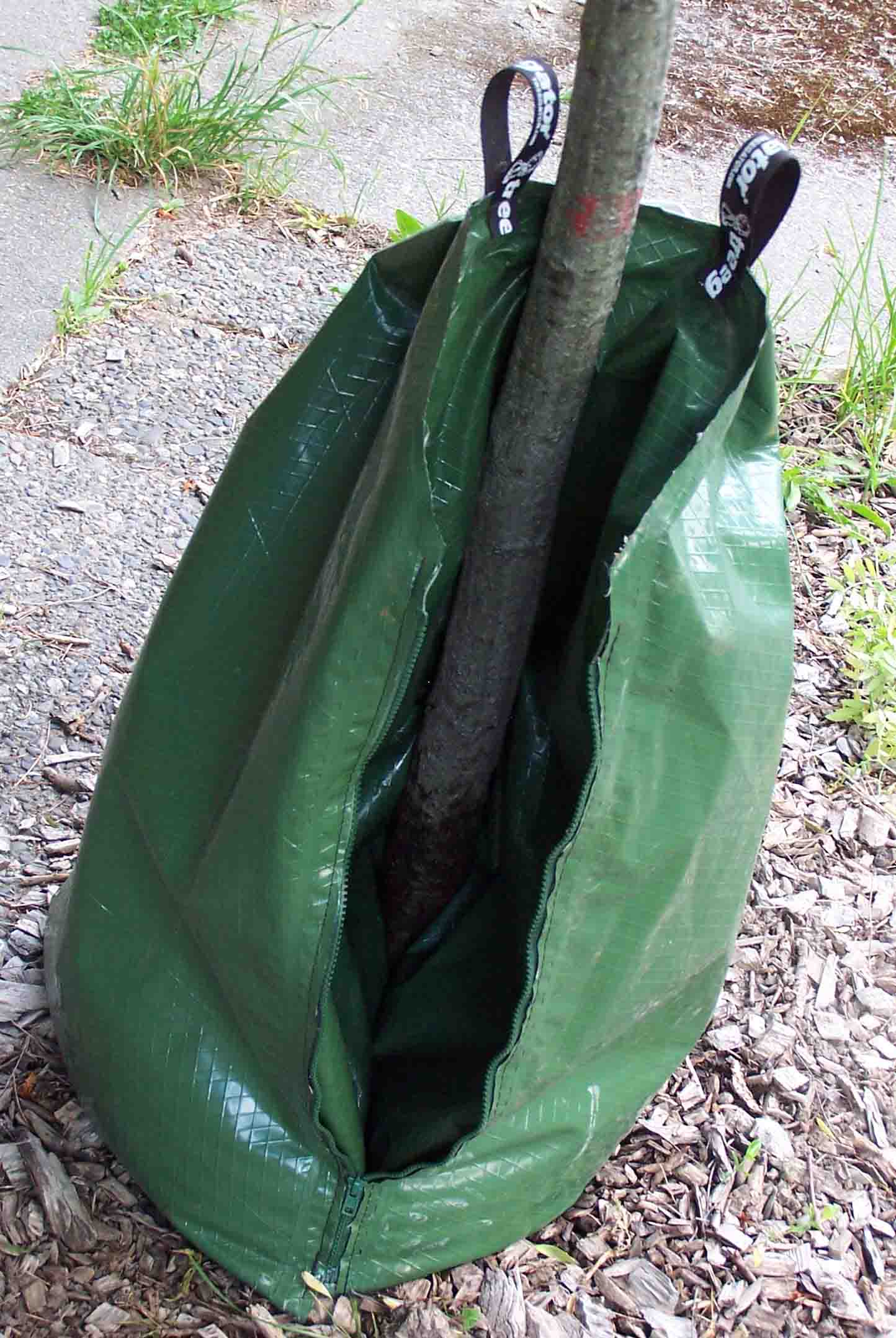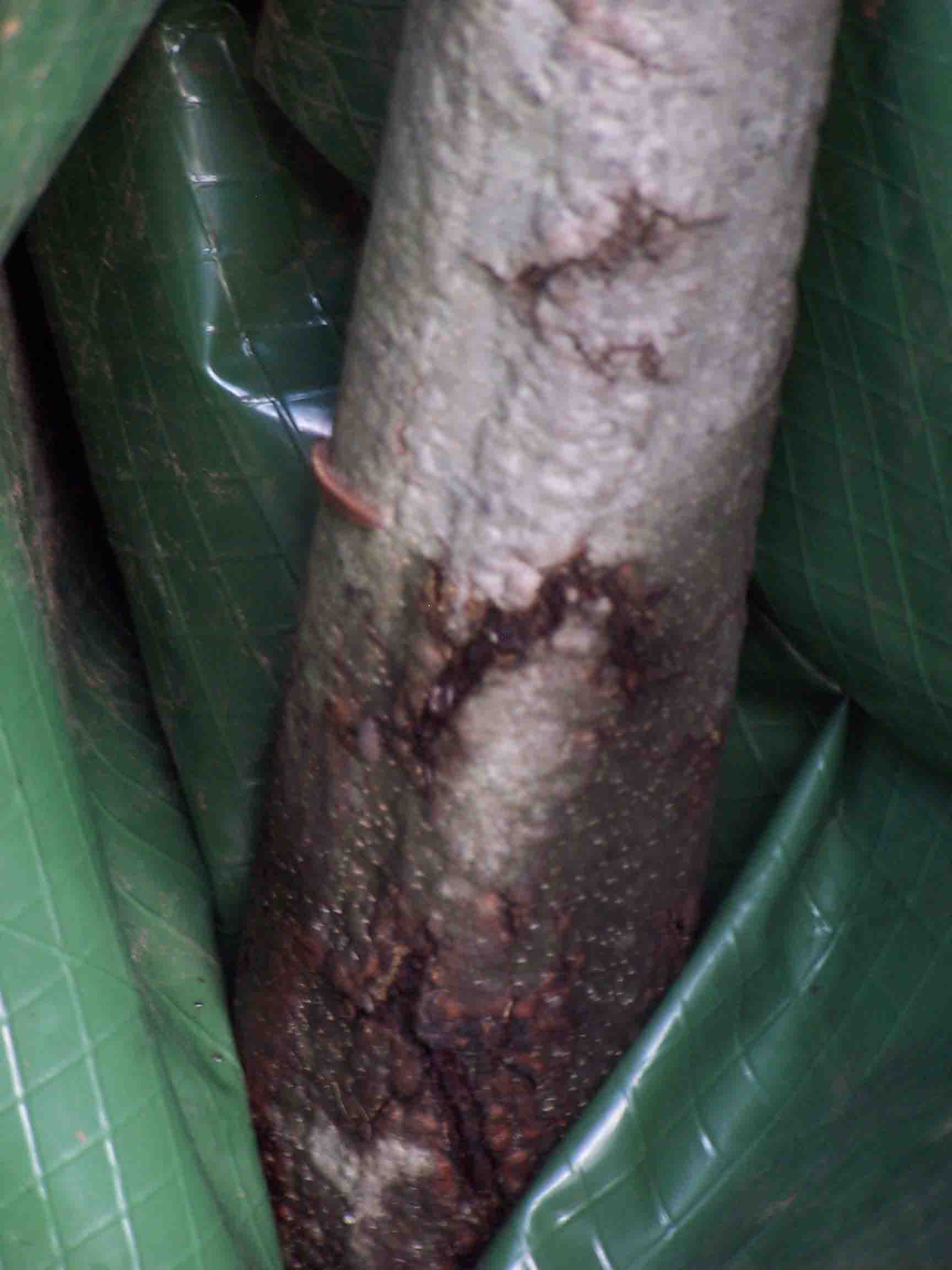So, Bert, you (and others) have done research on Tree Gator-type products and found them useful in providing water to newly planted trees and shrubs. For those of you that haven’t seen supplemental irrigation products, they are heavy-duty plastic bags that zip up to create a sleeve around tree trunks and drip water from their perforated bottoms (Figure 1). The City of Seattle uses them routinely, but I’ve seen a number of trees fail in spite of the additional irrigation. While many of these failures are undoubtedly the result of poor root systems, inadequate root preparation, and/or improper installation (Figure 2), what worries me is the long-term effect of these sleeves on tree trunks. I’ve seen nothing in the scientific or professional literature about this possible problem. So I thought I’d do an informal assessment of Tree-Gatored trees. Given what I’ve found, though, I’m tempted to do a more structured survey.


Figure 1. Tree Gator Figure 2. Poorly planted tree
First, I found a number of Tree Gators that were empty – probably close to half were nearly or completely drained. These devices don’t too much good if they aren’t kept filled. That’s an easy problem to fix compared to what I found when I unzipped the bags to look at the tree trunks. When the bags are full, they press against the trunk, creating a humid, dark environment (Figure 3) that’s only made worse when rainwater seeps into the space. As you can see in Figure 4, over time the bark rots, allowing insects and disease into the living tissues. The insects ran when I opened the bags, but I saw numerous pillbugs and millipedes – which feed on decaying matter – in those trees with rotting trunks.


Figure 3. Unzipped Tree Gator Figure 4. Rotted bark
(note wet bark on lower trunk) (note millipede on left side)
I think there can be fatal problems for young trees when these bags are used long-term. IMO, supplemental irrigators that resemble rubber donuts laid over the root zone are better designed. I would be sure to have a mulch layer protecting the soil from compaction by these water-filled rings, but at least the trunks are left uncovered.